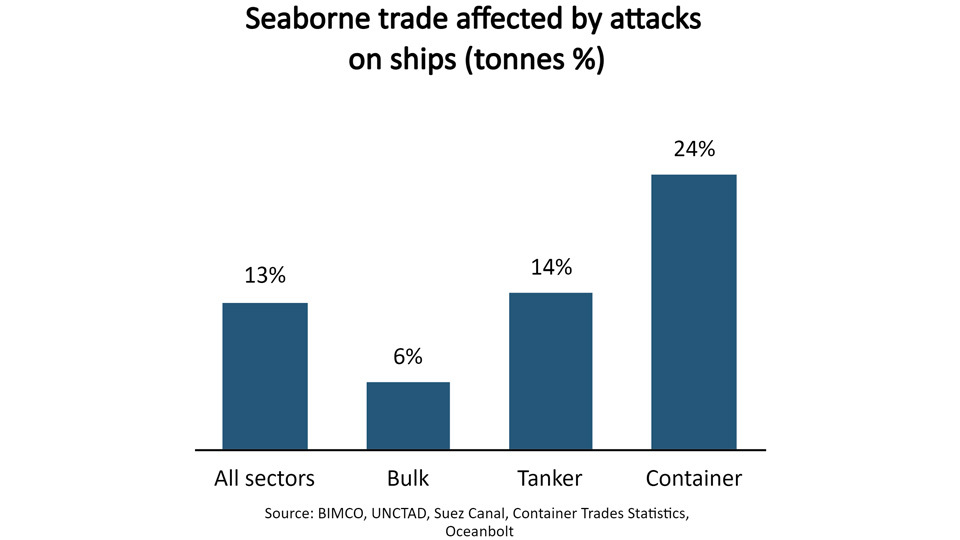The Baltic and International Maritime Council’s (BIMCO) latest market report unveils the extent of disruption that the recent unrest in the Red Sea compounded with a rise in piracy off the coast of Somalia have brought upon world trade.
In 2023 an estimated 13 per cent of global seaborne trade transited through these areas. However, the attacks have reduced the number of ships transiting the area by 50 per cent, stated Filipe Gouveia, Shipping Analyst at BIMCO.
The threat to shipping spiked for liners worldwide following the Houthi-led attacks on vessels traversing the Red Sea and Gulf of Aden since November 2023. This debilitating impact on shipping was compounded with the resurgence of piracy off the East Coast of Somalia. Gouveia reported that, since last December, two bulk carriers and several fishing ships have been hijacked, marking the first successful hijackings by Somali pirates in six years.
Subsequently, a significant drop in ships deployed to the region can be identified since the start of this year, while liners have opted for longer routes around the Cape of Good Hope. “In the first three weeks of March, the number of ships transiting through the Suez Canal was down 51 per cent year-on-year (YoY), accounting for a 63 per cent YoY drop in gross tonnage,” added Gouveia.
While mitigating health and safety risks, voyages across alternative routes has led to delays in cargo, tightening supply and increasing freight rates. The longer distances also boost bunker oil consumption which raises voyage costs and carbon emissions. Nevertheless, the risk to cross the affected areas present more dire consequences, of higher insurance premiums and more importantly, the loss of life.
To mitigate increased expenses and minimise delays, Gouveia noted that shippers may seek to reduce cargo passing through the impacted area while boosting trade in unaffected regions. However, this strategy is expected to be only partially effective and applicable to specific goods. Conversely, nations situated within the conflict zone face a greater struggle to circumvent the issues posed, leading to a decline in their capacity to engage in import and export activities.

READ: BIMCO records 4.3 per cent container fleet capacity increase
“Nation states are working to reduce the threat level in the Red Sea, Gulf of Aden and off the coast of Somalia. A US-led coalition and a maritime operation by the EU are attempting to improve ship safety in the Red Sea, so far with limited success,” said Gouveia.
“Meanwhile, the Indian Navy has been active in the fight against Somali piracy, recently recovering one of the hijacked bulk carriers. Despite efforts to improve safety, both groups remain active, and the Houthis have threatened to expand their attacks to ships in the Indian Ocean.
“Unless safety in the area improves significantly, ships cannot return to their normal routes. As shipping is responsible for transporting around 80 per cent of world trade, delays and higher costs are expected to continue.”
More recently, BIMCO released two standard Quiet Enjoyment Letters (QELs), the first of their kind in the sector.








